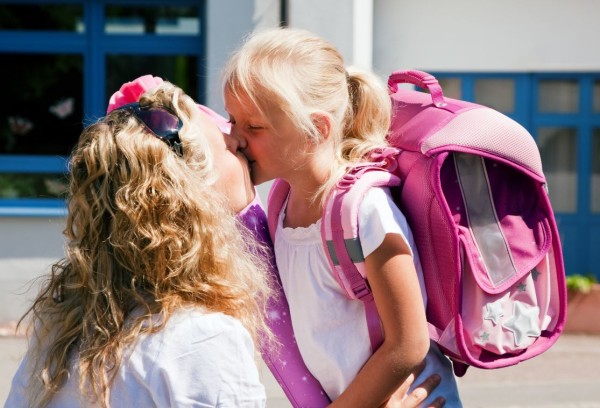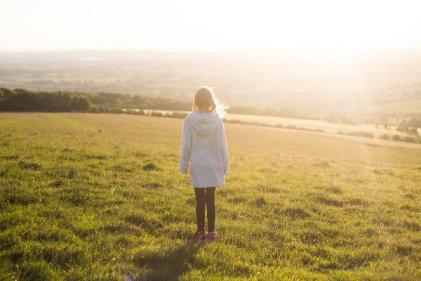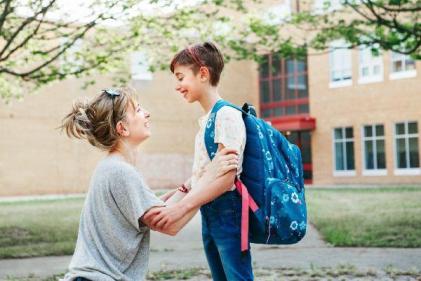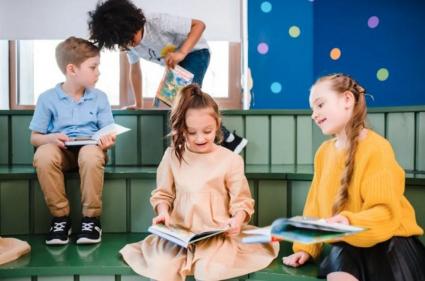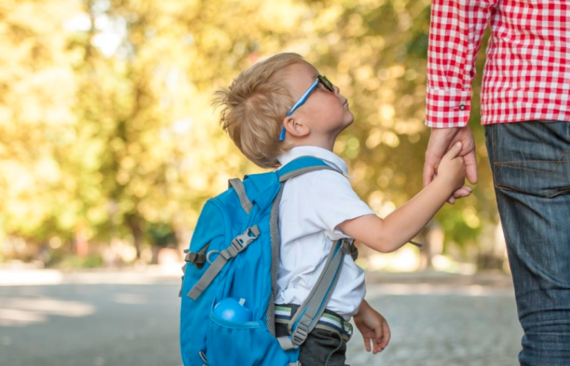
Kids can feel anxious about leaving Mum and Dad, meeting new people and adjusting to the classroom environment. However, it's not just kids who feel worried; parents can also become overwhelmed by the thoughts of their little one growing up and entering the school system.
In fact, according to research conducted by MummyPages together with the Fujifilm Imagine photo printing app, 73 percent of parents are anxious for their children on their first day of school, with 100 percent taking a photo of their child to mark the milestone.
"Starting school is a huge milestone in a child’s life. Whether kids are anxious about leaving their parents, or full of excitement for the day ahead, mums and dads play an integral role in helping them prepare," Laura Erskine Head of Community for MummyPages said.
"However, it is also important to capture these special moments with a photograph and even more so to print it out to show them how proud you are. All too often our photos live only in the digital world, and we forget to mark them in their physical form in our homes so that our children and visitors can enjoy them and remember every day.”
To help make the transition a little easier and to ensure everyone enjoys the day, MummyPages together with the Fujifilm Imagine photo printing app have compiled some valuable insights and tips to help parents and their children prepare for their first day of school.
1. It’s no big deal
DON’T hype up your child’s first day of school as it can lead to an anxious child.
DO play school at home with teddy bears or dolls to allow them to experience some of the new concepts they will encounter in school. Remind them that it’s just like Montessori or playgroup where they were previously settled and happy.
2. Map it out
DO create a Visual Checklist or Journey Map which are excellent for creating morning or bedtime routines at home or to prepare your child for a new experience. They support independence for kids who are transitioning or learning, while helping keeping them on track and moving forwards.
For the first day of school, pick out the key stages of the journey from breakfast right up to who will collect them from school. Make a list and take photos of your child completing each stage as a practice run. Then place the printed photos on a large sheet of card to create your checklist with a sticky post-it note beside each stage which can be ticked with a marker with a fresh page for each day. The Fujifilm Imagine App allows you to order your printed photos directly from your smartphone.
A visual journey map or routine chart chart does a lot more than just teach a child:
- It provides a focal point for what can be a challenging part of the day or upcoming transition
- It reduces anxiety for children by allowing them to see what people or places they are likely to encounter or what is expected of them at a particular time of the day
- It increases your child’s motivation to complete tasks
- It increases your child’s sense of independence
- It decreases parental nagging, which breeds learned helplessness (and your child relying on verbal reminders such as “put on your shoes” or “clean your teeth”)
Any time we can pair a visual reminder with any aspect of a behaviour plan, we decrease the cognitive effort required by a child’s brain to process the expectation. In other words, pictures are easier to understand and act on.
Visual checklists break down big tasks like “get ready for school” into simpler components. When we make it easier for children to manage their own routines, we establish neural pathways and muscle memory that increase independence.
3. Be practical
DON’T make your little one’s independent life in school any more difficult than it has to be.
DO make sure they can take on and off their coat, jumper and shoes by themselves. Ensure they are happy to go to the toilet unaccompanied and wipe away even after a number two! Practice together the opening and closing of their school bag, lunchbox and drinks container. Check they can recognise their name so they can easily identify their coat hook and any labels you have sewn on their clothing and personal items.
4. Take a trip up to the school
DON’T make school a mysterious potentially scary place.
DO visit the school grounds with your child so that they are familiar with the look of the building and what the playground looks like. Wave to the school as you pass by in the car and rehearse the route you will drive or walk.
5. Don’t linger
DON’T linger during the “moment of separation” when you go to leave their classroom.
DO give your child a quick hug and kiss and remind them who will be picking them up and what fun activity you have planned for their afternoon – then leave. Let the teachers do what they do best and distract the children by getting them quickly involved in activities.
6. What to do if your child is anxious
DON’T dismiss their anxiety or make them feel babyish for feeling nervous.
DO acknowledge that doing things can be a little scary at times and remind them of other times they were scared but are no longer so (going on the big slide in the park etc). Sometimes allowing your child to bring a small toy or keepsake from you they can just keep in their pocket and touch occasionally for reassurance can really help to maintain that link between home and school.
7. How to react if they don’t want to go back
DON’T dwell on the negative and insist that they must and that they have another 12 years of school.
DO talk about all the fun memories you have from your school days and suggest that you see how they feel once they see what the exciting activities the teacher has planned just in case they don’t want to miss out. Remind them who will be collecting them from school and encourage them to pick the activity for the afternoon after school. Map out on calendar all the celebratory occasions and fun things you have planned for the family between now and Christmas. Organise a play date with one of their classmates, watch out at the school drop-off for any parents you recognise or approach a mum you know has a child in your little one's class.

